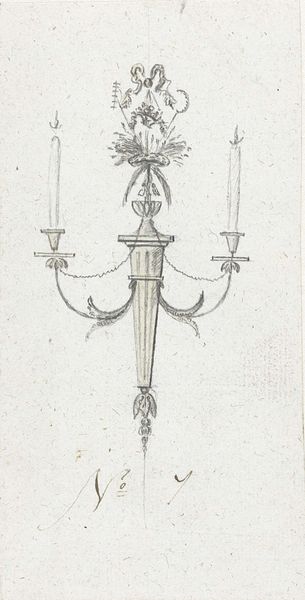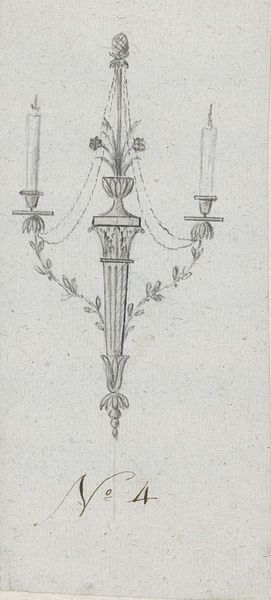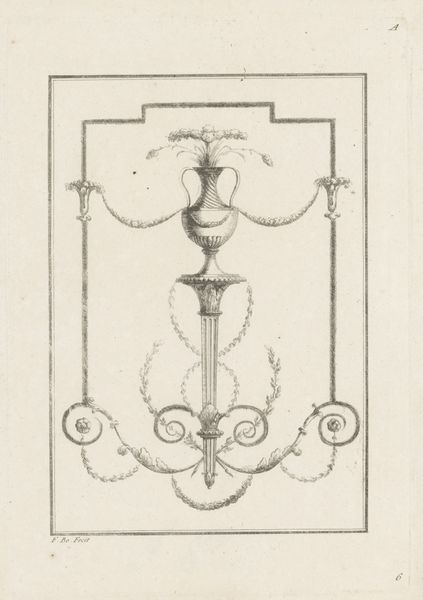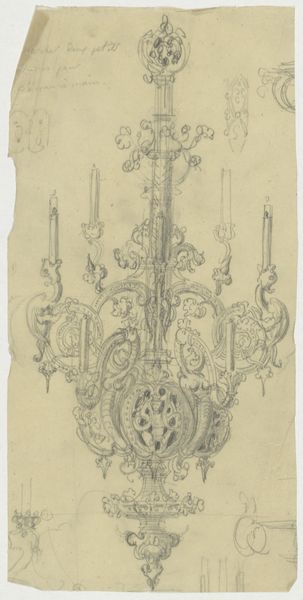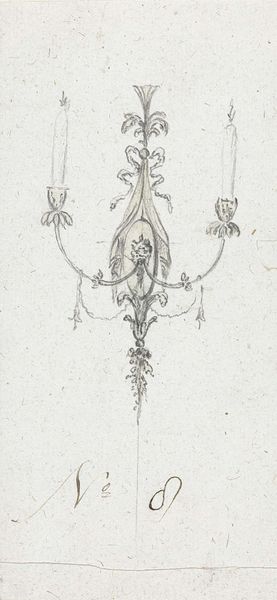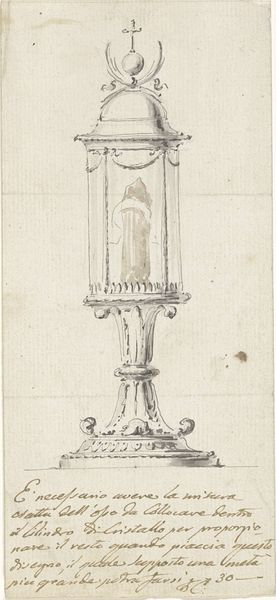
drawing, ornament, pencil
#
drawing
#
imaginative character sketch
#
neoclacissism
#
ornament
#
light pencil work
#
quirky sketch
#
form
#
personal sketchbook
#
idea generation sketch
#
sketchwork
#
geometric
#
pencil
#
sketchbook drawing
#
sketchbook art
#
fantasy sketch
#
initial sketch
Dimensions: height 182 mm, width 92 mm
Copyright: Rijks Museum: Open Domain
Editor: This is "Ontwerp voor een kandelaar (No. 5)", a design for a candlestick made with pencil on paper by Abraham Meertens, dating back to somewhere between 1767 and 1823. It strikes me as surprisingly modern, despite the neoclassical elements. What visual narratives or cultural echoes do you perceive in this design? Curator: Notice how the candlestick's form almost mimics a stylized human figure – the 'body' of the central support, the branching arms for the candles. It's not explicit, but these visual echoes were deeply ingrained in the 18th-century design. Do you think it resembles something of a family tree, branching towards the future? Editor: I hadn't considered the human form quite so directly, more as a balanced symmetrical object. I can see how it alludes to the tree form also. Is that urn with fronds a typical motif of that era? Curator: Exactly! The urn symbolizes classical antiquity, revival, and, in this context, perhaps a link to the eternal flame of knowledge and artistic inspiration. The fronds speak of growth and aspiration. Together, what story might those images be conveying about enlightenment values? Editor: Hmm, maybe the artist hoped to convey both a reverence for the past while simultaneously signaling growth into the future? That certainly explains its kind of “new-old” character that initially drew me in! Curator: Precisely. And even today, we carry those symbols forward, consciously or not, shaping our own spaces and stories. Editor: This has been a fascinating unpacking. Thanks! Curator: Indeed. Thinking about visual language and historical motifs helps make design relevant.
Comments
No comments
Be the first to comment and join the conversation on the ultimate creative platform.
